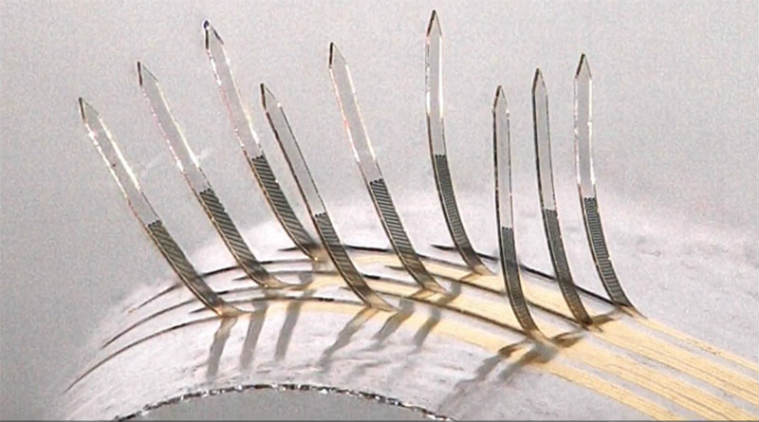 Scientists have created e-whiskers or hair-like structures that can pave the way for engineering electronic human-like skin for robots and prosthetics. (Image Source: University of Texas Dallas)
Scientists have created e-whiskers or hair-like structures that can pave the way for engineering electronic human-like skin for robots and prosthetics. (Image Source: University of Texas Dallas)
Scientists have created e-whiskers or hair-like structures that can pave the way for engineering electronic human-like skin for robots and prosthetics. Little whiskers or long, sticky hairs are actually the touch receptors you see on your pet send vital information about the surroundings to the brain and help the animals make sense of their environment.
Researchers from University of Texas at Dallas in the US used shape-memory polymers to create artificial, electronic versions called e-whiskers, which mimic the properties of the real thing. The hair-like structures are a significant advancement toward engineering electronic human skin, according to the researchers. “There are some really interesting examples in the animal kingdom of how whiskers are useful for probing and interrogating the environment,” said Jonathan Reeder, lead author of the study published journal Advanced Materials.
Seals use long whiskers for very complex sensing. Tests have been conducted in which a blindfolded seal will find a fish swimming in the pool and can actually track the fish based on turbulence. The fish disturbs the water, the water disturbs the whiskers of the seal, and that gives it information about where the fish is. It is the 3D structure of the whiskers that enables these advanced functionalities. Outlines of the e-whiskers were cut out from a flat sheet of shape-memory polymer, which is rigid at room temperature but becomes flexible when heated.
A flexible strain sensor was patterned on top of each whisker, which had about the same diameter as a human hair and remained attached to the sheet. Then researchers blew hot air through the bottom of the cutouts, the material became soft and bendable, allowing the little fingers or e-whiskers to rise and become three-dimensional. Once the e-whiskers were assembled disturbances induced changes in the resistance of the strain sensor that allowed for the precise tracking of each e-whisker position.
The researchers said robotics and prosthetics could be two of the biggest applications for the e-whiskers.